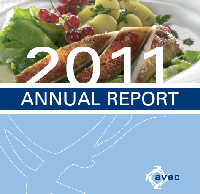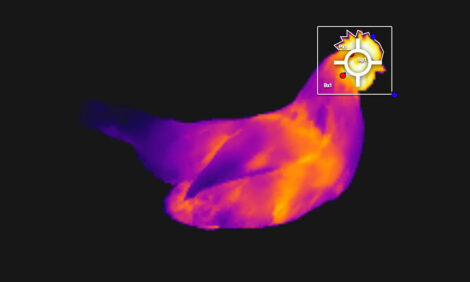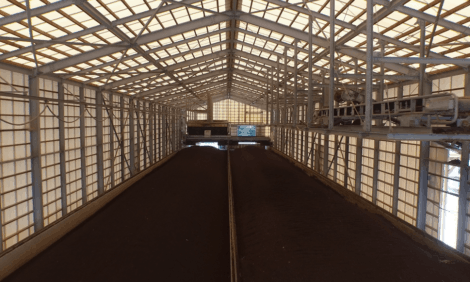



Animal Welfare and Health in the EU
An overview of the developments in poultry health and welfare regulations in the European Union from the 2011 annual report of avec, the Association of Poultry Processors and Poultry Trade in the EU Countries.
New Community Action Plan on Protection & Welfare of Animals 2011-2015
The Commission's preparation of the new animal action plan continues. The Parliament concluded in March 2010 its report to the Commission and made recommendations for the action plan 2011-2015.
In 2009, the Commission sponsored research project Welfare Quality research project delivered a first report on animal welfare assessment parameters and suggested welfare quality principles: good housing, good feeding, good health and appropriate behaviour. Based on the report, European Food Safety Authority (EFSA) gave itself a mandate for developing guidance on risk assessment for animal welfare (see EFSA below).
The EconWelfare project, like the Welfare Quality project initiated in 2008, collected data in 2011 on on-farm standards, of-farm standards, consumer trust, education and information enhancement, developing markets and increasing public awareness of animal welfare issues.The aim is to improve animal welfare by creating the necessary public and private legislation and standards.
The Commission is expected to publish a new Community Action Plan for Animal Welfare 2011-2015 in December 2011. avec demands that high EU animal welfare standards are equivalent for countries exporting poultry to the EU. So far, the World Trade Organisation (WTO) regards animal welfare claims as technical barriers to trade.
Minimum Rules for Protection of Chickens Kept for Meat Production
Directive 43/2007 entered into force on 30 June 2010 and sets rules for maximum stocking density, feeding and drinking facilities, ventilation, heating, light, litter, noise, record keeping, training and surgical interventions.
avec has collected information from its members on the implementation by Member States. Most Member States seem to follow the content. The Commission will also collect data in 2012 on the implementation by Member States and is expected to publish a report in 2012 on the results. avec keeps fighting for a harmonised approach which is needed to avoid internal market distortions.
Protection of Animals during Transport
The Regulation 1/2005 is currently under revision. It covers transport of animals including poultry. avec stays in touch with the Commission on the issues at stake for the poultry industry. Harmonised standards should apply in all Member States. In connection with the revision, EFSA has published a report (see EFSA below).
Many issues are critical for avec's members. avec has sent its comments to DG SANCO on necessary crate sizes for day old chicks, broilers and turkey. Too much space in crates increases injuries and compromises animal welfare. Uploading and unloading times should not be included in the total transport times. avec intends to deliver a position with the participation of other interested stakeholders to the EFSA report.
The Commission is expected to present a communication to the Council and European Parliament possibly with legal proposals to review the Regulation by the second half of 2011. avec will closely follow the developments.
EFSA's Animal Welfare Activities 2011
A consultation was held by EFSA's Animal Health and Welfare (AHAW) committee on the guidance on assessing animal welfare in May 2011. avec made joint comments to the EFSA guidance with EFFAB, EPB, AEH and the PVSG in June 2011, stating that EFSA's opinions in general are biased and lack the input from the industries who continuously gather experience from practice and suggesting that EFSA includes representatives from the industry in its panels, working groups and projects.
EFSA's Scientific Report on Welfare during Transport
The report published in January 2011 is the third in the series on animal welfare (housing management and animal welfare at time of killing). The report is critical on a number of poultry issues especially heat stress and fitness of the birds for transport. For avec, especially important are changes in size of crates for day-old chicks and turkeys larger than 15kg and the maintenance of current transport time and vehicle conditions of poultry and day-old chicks.
EFSA published in July 2010 its report on welfare aspects of housing management and the Commission will use it for its report to be published end of 2012 including comments on the first experience with the implementation of the Directive 2007/43.
Animal Health – Community Animal Health Strategy 2007-2013
The Commission's preparation of the new animal health law continues. It redefines the interfaces of animal health legislation with the current legal framework on animal welfare and nutrition, food safety, veterinary medicinal products, CAP and international trade rules.
This year's Veterinary Week ‘Crisis Management in the Food Chain’ in May 2011 highlighted impacts, management, perspectives and communication in the food chain. The conference coincided with the first E. coli outbreak in Germany and the Commission was criticised by professional journalists for its late communication response to the crisis.
In June 2011, DG SANCO made recommendations on the cost sharing schemes with a view to harmonise the EU framework for costs and responsibility sharing for animal diseases. The report recommends harmonization of the EU reimbursement rate, risk based compensation and shared public private responsibility. A legislative proposal is expected in 2011.
Compartmentalisation
avec and EPB have been involved in the drafting of the Regulation (EC) 616/2009 implementing Directive 2005/94/EC on approval of poultry compartments. Compartmentalisation is based on animal populations with the same health status under one bio-security plan, and depends on high standards of bio-security, risk assessment and partnership between industry and veterinary authorities. The overall aim is to stop the spread of the disease so that trade can resume as soon as possible after an outbreak. Today, it seems that the implementation by instalment of compartments is delayed for lack of sufficient interest and capacity in both public and private sector with some exceptions.
Animal Cloning – New Legislative Proposal?
The proposal for a Regulation of the European Parliament and the Council on novel foods – 2008/002 (COD) includes foods derived from plants and animals produced by non-traditional breeding techniques as cloning.
The latest EFSA update from September 2010 concludes that not enough information is available for an assessment of food safety and animal health and welfare aspects. Cloning is not used in the poultry sector but avec argues that the option should be kept open for future use in the poultry breeding and has made a joint position with EPB and EFFAB on cloning to the Commission in 2010.
A conciliation on novel foods proposal failed after more than three years of negotiations as the European Parliament was unable to compromise on its request for mandatory labelling for food derived from offspring of cloned animals, irrespective of the technical feasibility and the practical implications of such mandatory labelling. In the absence of an agreement, the EU stays with the status quo. The Commission has promised a new proposal soon.
December 2011








